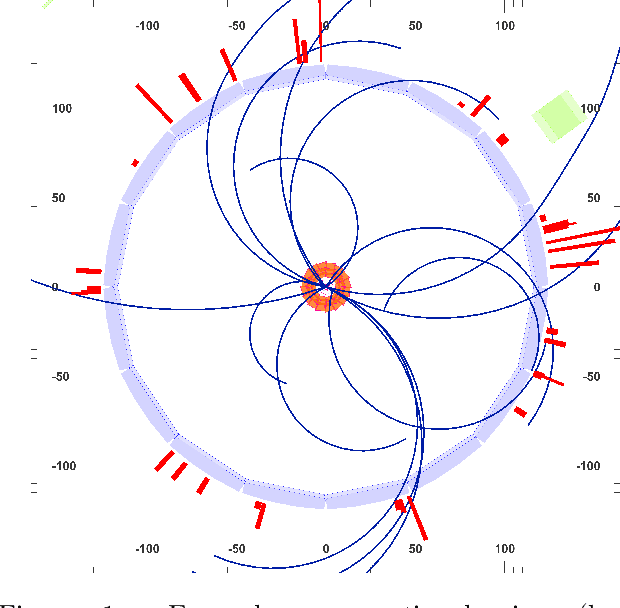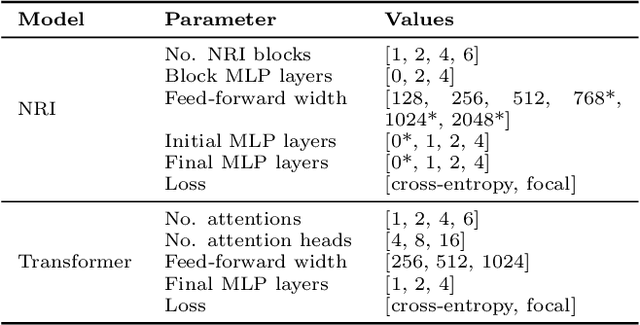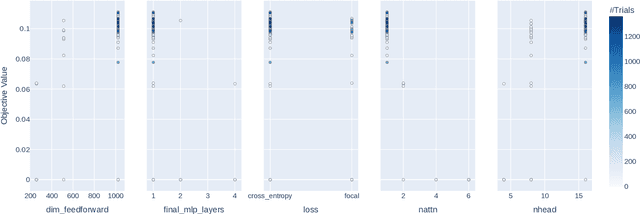Lea Reuter
Real-time Graph Building on FPGAs for Machine Learning Trigger Applications in Particle Physics
Jul 14, 2023Abstract:We present a design methodology that enables the semi-automatic generation of a hardware-accelerated graph building architectures for locally constrained graphs based on formally described detector definitions. In addition, we define a similarity measure in order to compare our locally constrained graph building approaches with commonly used k-nearest neighbour building approaches. To demonstrate the feasibility of our solution for particle physics applications, we implemented a real-time graph building approach in a case study for the Belle~II central drift chamber using Field-Programmable Gate Arrays~(FPGAs). Our presented solution adheres to all throughput and latency constraints currently present in the hardware-based trigger of the Belle~II experiment. We achieve constant time complexity at the expense of linear space complexity and thus prove that our automated methodology generates online graph building designs suitable for a wide range of particle physics applications. By enabling an hardware-accelerated pre-processing of graphs, we enable the deployment of novel Graph Neural Networks~(GNNs) in first level triggers of particle physics experiments.
Learning Tree Structures from Leaves For Particle Decay Reconstruction
Sep 01, 2022



Abstract:In this work, we present a neural approach to reconstructing rooted tree graphs describing hierarchical interactions, using a novel representation we term the Lowest Common Ancestor Generations (LCAG) matrix. This compact formulation is equivalent to the adjacency matrix, but enables learning a tree's structure from its leaves alone without the prior assumptions required if using the adjacency matrix directly. Employing the LCAG therefore enables the first end-to-end trainable solution which learns the hierarchical structure of varying tree sizes directly, using only the terminal tree leaves to do so. In the case of high-energy particle physics, a particle decay forms a hierarchical tree structure of which only the final products can be observed experimentally, and the large combinatorial space of possible trees makes an analytic solution intractable. We demonstrate the use of the LCAG as a target in the task of predicting simulated particle physics decay structures using both a Transformer encoder and a Neural Relational Inference encoder Graph Neural Network. With this approach, we are able to correctly predict the LCAG purely from leaf features for a maximum tree-depth of $8$ in $92.5\%$ of cases for trees up to $6$ leaves (including) and $59.7\%$ for trees up to $10$ in our simulated dataset.
 Add to Chrome
Add to Chrome Add to Firefox
Add to Firefox Add to Edge
Add to Edge